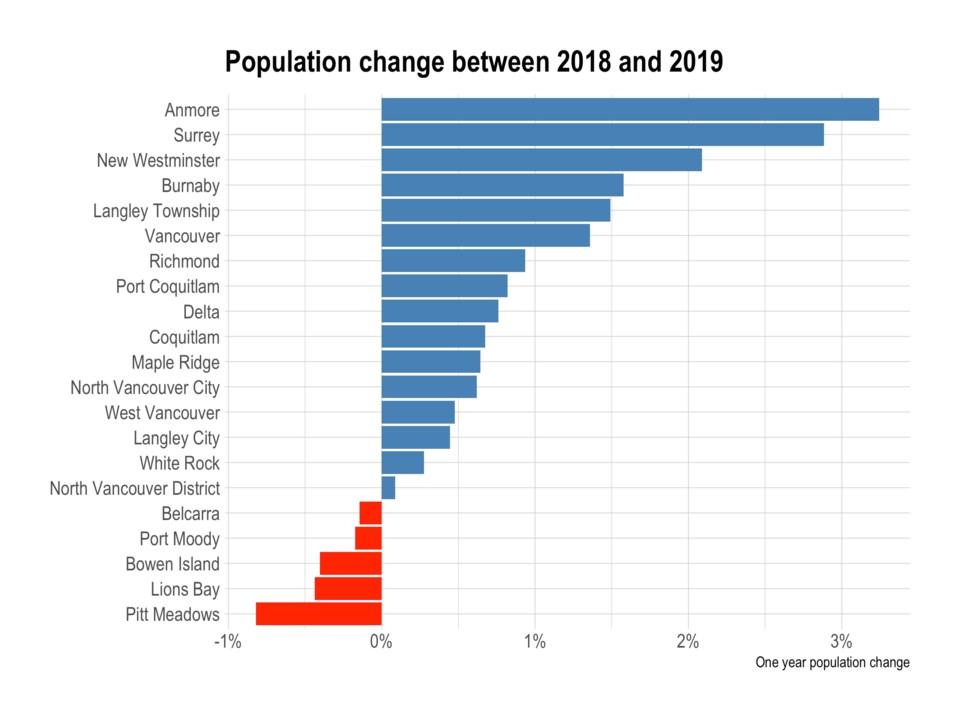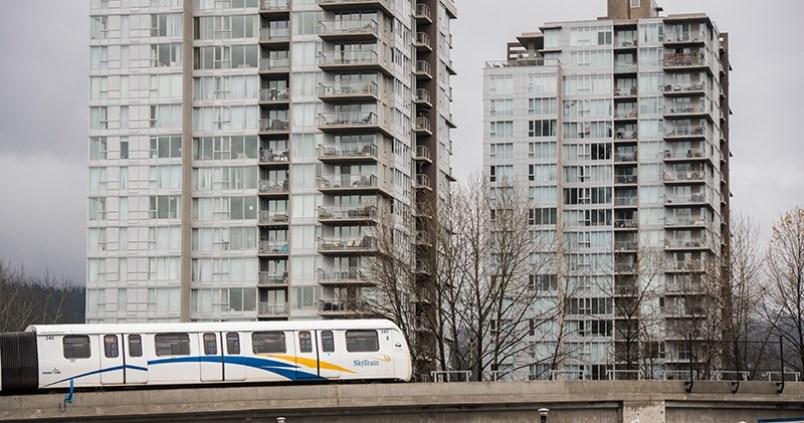Fears of rampant residential development and out-of-control growth in the city of Port Moody do not align with new population estimates released this week.
In fact, the Tri-City municipality is one of only a handful of cities in Metro Vancouver that has seen its population decline in recent years.
The data, compiled by the provincial government, shows that between 2018 and ’19, the number of people who call PoMo home dropped by 61, or about 0.17%. The longer-term trend is similarly stable, with the population figures falling 1%, or about 351 people, since 2015.
Only one other Metro Vancouver municipality — Lions Bay, along the Sea-to-Sky Highway — has seen its population decline over the last five years during a time when the average city grew 4.73%, according to the data.

Port Moody Mayor Rob Vagramov, who campaigned on reining in development, said he believes concerns over growth are not necessarily about the current population numbers but what has been proposed for the future.
“The stuff that is being built today or just got built last year has already been decided,” he said. “When they talk about population issues, they are talking about the future.”
Vagramov said many developments are in the planning stages and will lead to increases in the number of people in Port Moody. For example, plans for the Moody Centre area currently being debated at council could add between 8,000 and 11,000 residents by the time it is built out.
He also pointed to infill developments and a number of smaller projects under 50 units that are contributing to the city’s population numbers.
When asked whether he thought Port Moody was doing its part to accommodate the increased population influx currently hitting the region, he said the city has growth-projection targets in its official community plan, which was approved by the Metro Vancouver board.
“I’ve heard this out there before, that cities have to pull their weight or whatever,” he said. “I hear that largely from developers. I hear that largely from developer lobby groups, like [the Urban Development Institute]. I don’t hear that from average people.”

While Vagramov said he adheres to the principles of supply and demand, he noted that new development has not translated into more affordable homes for residents.
“I support growth but I don’t support infinite growth,” he said, later adding: “We have been told that we have to build more and prices will come down and we have seen that is not the case.”
He would like to see restrictions or a ban on foreign ownership of what he calls “basic housing.”
“I don’t care what games they play for the expensive stuff,” he said.
And he blamed a lack of oversight over the development industry for creating the affordability crisis.
According to the population estimates, Coquitlam added about 1,000 people between 2018 and ’19, an increase of 0.67%. However, the municipality has been one of the fastest growing in the region growing 16.4% since 2010.
Port Coquitlam has also seen steady population growth, increasing by more than 500 people (0.82%) between 2018 and ’19. PoCo has seen its population rise 4.7% over the last five years and 10.7% over the last decade.



